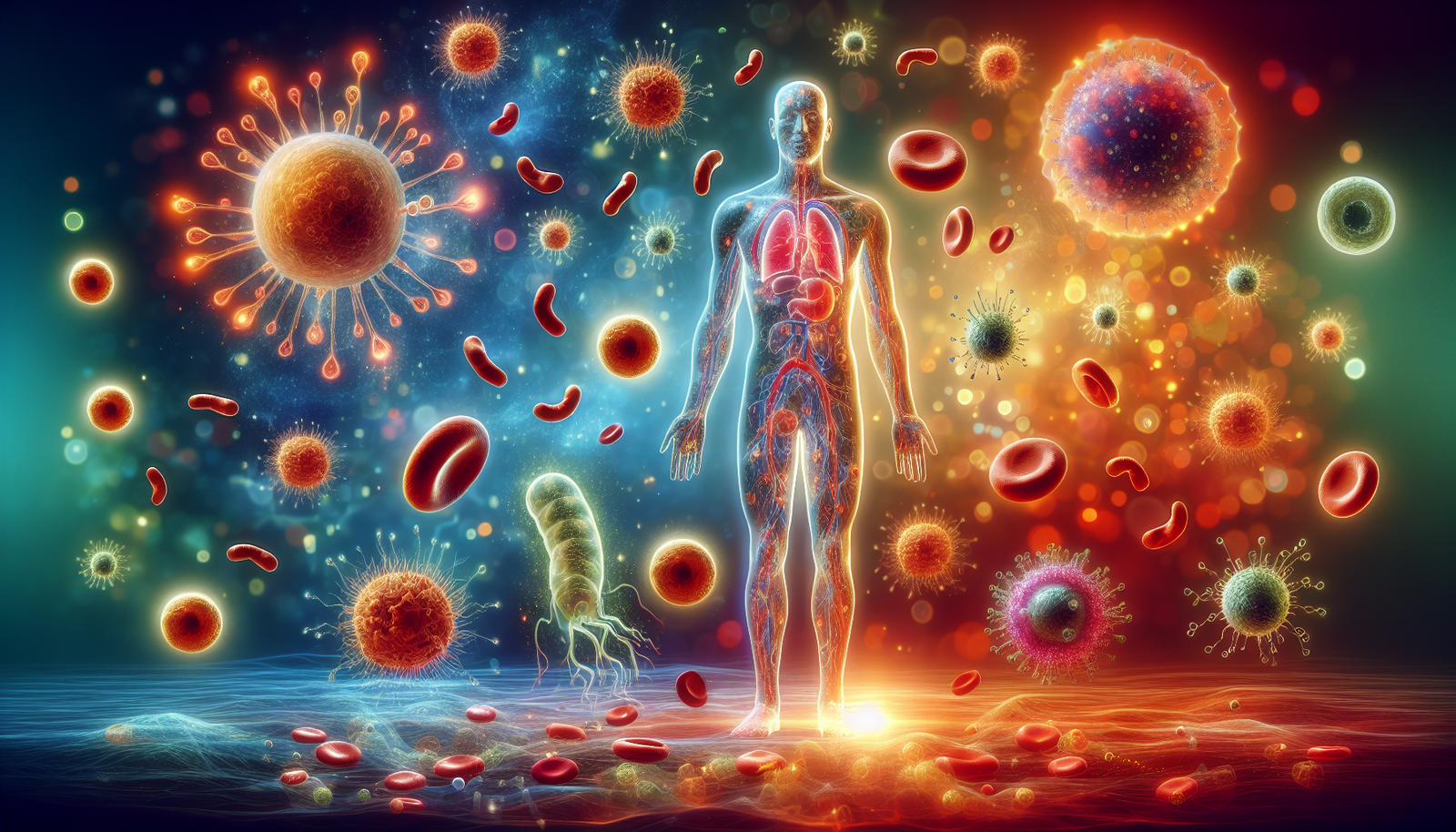Vibrant Aging: Maintaining Vitality Through the Decades
Vibrant Aging: Maintaining Vitality Through the Decades
Aging is an inevitable part of life, yet the way we approach it can dramatically affect our overall quality of life. Vibrant aging is not merely about adding years to our lives but enhancing the quality of those years through a proactive lifestyle. This comprehensive guide delves deep into various strategies that foster vitality through the decades, emphasizing physical health, mental well-being, social connections, and lifestyle choices. Each section will explore actionable techniques that can be integrated into daily life to cultivate resilience and joy as we age.
1. Physical Activity: The Cornerstone of Vibrant Aging
1.1 Importance of Regular Exercise
Regular physical activity is paramount for maintaining strength, flexibility, balance, and endurance as we age. Studies have shown that individuals who engage in consistent exercise experience fewer chronic illnesses, better mobility, and enhanced mental health.
1.2 Types of Exercise
- Aerobic Exercise: Activities such as walking, swimming, and cycling enhance cardiovascular health and promote endurance. Aim for at least 150 minutes of moderate-duration aerobic exercise each week.
- Strength Training: Lifting weights helps counteract muscle loss and improve metabolism. Incorporate strength-training exercises at least twice weekly.
- Flexibility and Balance: Practices like yoga and tai chi enhance flexibility, balance, and mental clarity, reducing the risk of falls.
1.3 Creating a Personalized Workout Plan
Consider fitness levels and preferences when designing a workout routine. Regularly reassess the plan to keep it engaging and aligned with personal goals.
2. Nourishing Your Body: The Role of Nutrition
2.1 Emphasizing a Balanced Diet
A nutrient-rich diet plays a critical role in maintaining health and vitality. Prioritize whole foods including:
- Fruits and Vegetables: Rich in antioxidants, vitamins, and minerals; they support overall health.
- Lean Proteins: Sources such as chicken, fish, beans, and legumes help in muscle repair and maintenance.
- Healthy Fats: Incorporate sources like avocados, nuts, olive oil, and fatty fish for cardiovascular health.
2.2 Hydration: The Often-Overlooked Element
Staying hydrated is essential for cognitive function and organ health. Aim for at least eight 8-ounce glasses of water daily, adjusting according to activity level and climate.
2.3 Understanding Dietary Needs Through the Decades
Nutritional requirements shift throughout life. For instance, calcium and vitamin D become crucial in maintaining bone health post-menopause. Work with a registered dietitian to tailor dietary choices to specific health needs.
3. Mental Well-Being: Cultivating Cognitive Vitality
3.1 Engaging the Mind
Cognitive stimulation plays a significant role in brain health. Activities such as reading, puzzle-solving, and learning new skills can help maintain mental acuity.
3.2 Mindfulness and Stress Management
Practices like meditation, deep breathing, and yoga can significantly reduce stress levels, enhancing mental clarity and emotional resilience. Designate time daily for relaxation and mindfulness.
3.3 Social and Intellectual Engagement
Joining clubs, attending workshops, or participating in community activities can boost cognitive function and provide a sense of belonging. Maintain connections with loved ones and seek new friendships to nurture emotional health.
4. Social Connections: The Heart of Vibrant Aging
4.1 The Role of Relationships
Strong social ties have consistently been linked to longer life and enhanced well-being. Foster relationships through regular communication, family gatherings, or community involvement.
4.2 Volunteer Opportunities
Engagement in volunteer activities not only benefits others but also enriches your own life. Consider local organizations, charities, or mentorship programs that resonate with personal values.
4.3 Embracing New Experiences
Traveling, trying new hobbies, or attending local events can introduce you to diverse people and perspectives, reinforcing social networks.
5. Preventive Health: Staying Proactive About Wellness
5.1 Regular Health Check-ups
Routine doctor visits and screenings can prevent potential health issues from developing or worsening. Stay informed about age-appropriate screenings such as mammograms, colonoscopies, and cholesterol checks.
5.2 Vaccinations
Keep vaccinations up to date, particularly influenza, pneumonia, and shingles vaccines, to prevent infection and promote health.
5.3 Managing Chronic Conditions
If you have existing health conditions, working with healthcare professionals to manage these will be key in maintaining a vibrant lifestyle.
6. Sleep: The Unsung Hero of Vitality
6.1 Importance of Quality Sleep
Sleep is crucial for physical and mental health. Aim for 7-9 hours of quality sleep each night. Poor sleep can lead to cognitive decline, mood disorders, and physical health issues.
6.2 Creating a Restful Environment
Establish a sleep-friendly atmosphere by minimizing noise and light, investing in comfortable bedding, and maintaining a consistent sleep schedule.
6.3 Sleep Hygiene Practices
Incorporate bedtime routines such as winding down with a book, practicing relaxation techniques, or limiting screen time before bed.
7. Mindset and Attitude: The Power of Positivity
7.1 Embracing Change
Acknowledge that aging brings change, and approach it with a positive mindset. Focus on opportunities for growth and self-discovery rather than losses.
7.2 Practicing Gratitude
Regularly reflecting on and expressing gratitude can improve mental well-being and foster a more optimistic outlook on life.
7.3 Lifelong Learning
Adopt a growth mindset by continually seeking knowledge and experiences. Whether through formal education or new hobbies, embracing lifelong learning can enrich life and delay cognitive decline.
8. The Impact of Technology on Vibrant Aging
8.1 Staying Connected
Leverage technology to maintain social connections with family and friends. Video calls, social media, and messaging apps can bridge distances and keep loved ones close.
8.2 Health-Tracking Tools
Use wearable fitness technology to monitor physical activity, heart rate, and sleep patterns, empowering informed health decisions.
8.3 Accessing Information
Online resources provide a wealth of information on health, wellness, and lifestyle topics. Stay informed about new studies and practices that can enhance vibrant aging strategies.
9. Embracing a Holistic Approach
9.1 Integrating Multiple Dimensions
Recognize the interconnectedness of physical, mental, and social health. A holistic approach encourages a balanced life, increasing resilience against the challenges of aging.
9.2 Personal Development
Focus on personal growth, whether through creative outlets, spiritual exploration, or expanding one’s knowledge base.
9.3 Community Support
Find support groups or community initiatives that resonate with personal experiences and interests. Connecting with others who share similar journeys can provide motivation and solace.
10. Financial Well-Being: A Vital Component
10.1 Planning for the Future
Financial stress can hinder vibrant aging. Engage in long-term financial planning, including retirement savings, budgeting, and investment strategies.
10.2 Seeking Professional Guidance
Consider consulting with a financial advisor to navigate retirement funds, healthcare costs, and estate planning.
10.3 Lifelong Learning in Finance
Stay informed about financial literacy through workshops or online resources to make knowledgeable decisions that contribute to peace of mind.
11. Alternative Therapies: Exploring New Avenues
11.1 Holistic Health Practices
Explore therapies such as acupuncture, aromatherapy, or chiropractic care as complementary options for health maintenance.
11.2 Art and Music Therapy
Engaging in creative outlets can have profound effects on mental health and well-being. Consider taking art or music classes to enrich emotional expression.
11.3 Herbal Supplements and Natural Remedies
Consult with healthcare professionals to explore herbal supplements or natural remedies that may align with health goals or complement traditional treatments.
12. Setting Goals for Vibrant Aging
12.1 Personal Vision Creation
Visualize aging vibrantly by setting realistic, actionable goals. Use the SMART criteria (Specific, Measurable, Achievable, Relevant, Time-bound) to create structured objectives.
12.2 Regular Review and Adjustment
Conduct regular check-ins to evaluate progress and adjust goals as needed. Life’s changes may necessitate pivots in strategy.
12.3 Celebrating Milestones
Celebrate achievements, no matter how small. Acknowledging progress fosters motivation and positivity.
By incorporating these comprehensive strategies, individuals can navigate aging with grace, vitality, and joy. A commitment to physical health, mental enrichment, social connectedness, and proactive health management paves the way for a fulfilling aging experience.








